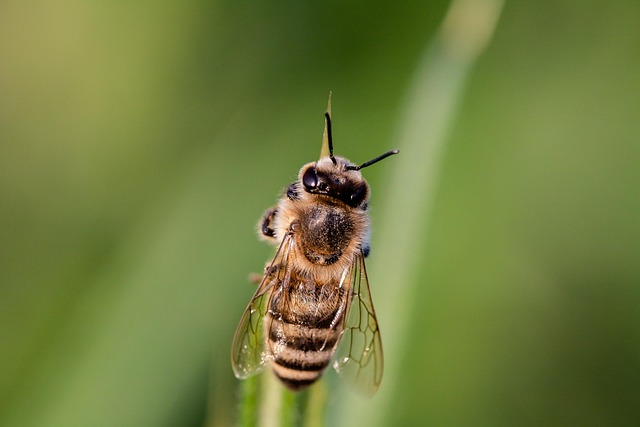Wood boring insects, like beetles and termites, pose significant threats to properties. Traditional chemical methods have drawbacks, prompting a shift towards eco-friendly solutions including natural repellents, biological controls, and heat/cold treatments. Professional wood pest control services now incorporate these methods for both residential and commercial spaces, prioritizing safety and minimizing environmental impact. Selecting such specialists ensures effective, sustainable wood boring insects removal while protecting families, pets, and the ecosystem.
In the battle against wood boring insects, a delicate balance must be struck between effective removal and environmental preservation. These pests can cause significant damage to both residential and commercial properties, but traditional methods often rely on toxic chemicals with detrimental impacts. This article explores eco-friendly alternatives for safe wood boring insect removal, empowering homeowners and businesses to protect their investments while preserving the environment. From understanding these insects’ lifecycle to choosing the right professional, discover how green pest control offers a sustainable solution without compromising efficacy.
Understanding Wood Boring Insects and Their Impact
Wood boring insects are a common issue that can significantly impact both residential and commercial properties. These pests include beetles, termites, and other wood-eating creatures that infest and damage structures over time. They bore into wood, creating tunnels that weaken the material, leading to structural damage and reduced property value. The impact of these insects goes beyond just physical harm; they can also pose health risks if left untreated, as some species produce toxic spores.
Professional wood pest control is essential for effective wood boring insect removal. Traditional methods often involve harmful chemicals that may have negative environmental and health effects. As a result, many are turning to eco-friendly solutions. These include natural repellents, biological control methods, and heat or cold treatment. For instance, using boric acid or neem oil can act as deterrents without causing significant damage to the environment. Eco-friendly wood insect solutions not only protect structures but also preserve the surrounding ecosystem, making them a preferred choice for those seeking sustainable pest control measures.
Traditional vs Eco-Friendly Pest Control Methods
In the battle against wood boring insects, traditional methods often rely on chemical pesticides, which can pose significant risks to both the environment and human health. These chemicals not only harm the targeted pests but also affect non-target organisms, including beneficial insects and wildlife. They can contaminate soil, water bodies, and even indoor air, leading to long-term ecological imbalances.
Eco-friendly solutions offer a more sustainable approach to wood boring insect removal. Instead of synthetic chemicals, these methods utilize natural predators, biological controls, plant extracts, and heat treatments. Professional wood pest control services now incorporate eco-friendly techniques for both residential and commercial properties, providing effective wood boring beetle extermination without compromising the well-being of the ecosystem. This shift towards greener alternatives ensures a safer environment while effectively managing infestations of wood boring insects.
Implementing Safe and Effective Eco-Friendly Solutions
Implementing Safe and Effective Eco-Friendly Solutions
When it comes to addressing wood boring insect issues, turning to eco-friendly methods offers a responsible and sustainable approach to both pest control and preservation of our environment. Professional wood pest control specialists are now equipped with an array of innovative solutions that target wood boring beetles and other insects without resorting to harmful chemicals. These methods not only ensure the safety of your family, pets, and local ecosystems but also contribute to maintaining a healthier indoor environment.
Residential and commercial wood insect removal can be effectively managed through integrated pest management strategies. This involves a combination of preventive measures, monitoring, and targeted treatments using natural or minimally toxic products. For example, boric acid or diatomaceous earth can be applied in strategic locations to disrupt the life cycles of boring insects. Alternatively, biological control agents like nematodes or fungi specifically target certain species, offering a highly effective yet eco-conscious option for wood boring beetle extermination.
Choosing the Right Professional for Eco-Conscious Pest Management
When considering eco-friendly solutions for wood boring insect removal, it’s paramount to select a professional pest control service that aligns with your values. Opting for a company specializing in green pest management ensures the use of non-toxic, environmentally sound methods for eliminating wood boring beetles and other insects. These professionals are equipped to handle both residential and commercial wood pest treatment, offering tailored solutions to fit specific needs.
Choosing an eco-conscious pest control expert means prioritizing safety—for your family, pets, and the planet. They employ advanced techniques such as natural repellents, heat treatments, or pheromone traps, avoiding harsh chemicals that could leave residuals. Such methods not only protect your environment but also prevent reinfestation, making them a sustainable and effective choice for wood boring insect removal.
When dealing with wood boring insects, opting for eco-friendly solutions offers a safe and sustainable approach to management. By understanding these insects’ impact and choosing the right methods, professionals can provide effective protection for both residential and commercial spaces. Eco-conscious pest control not only minimizes environmental harm but also promotes a healthier ecosystem. With the right expertise, it’s possible to eliminate wood boring beetles and other pests while preserving the integrity of structures and the surrounding environment.
